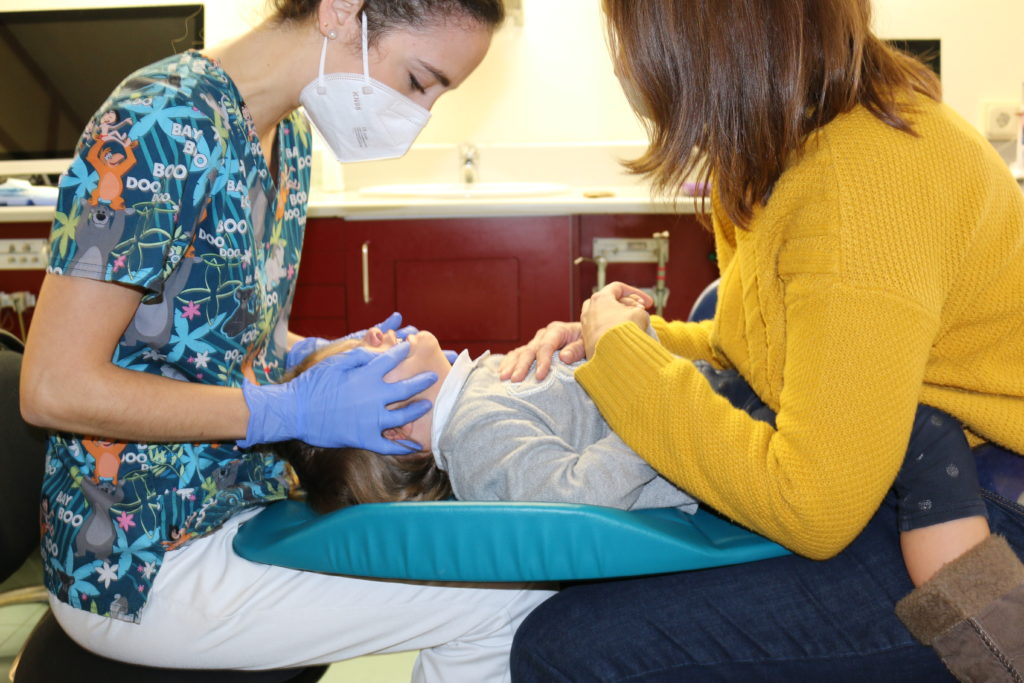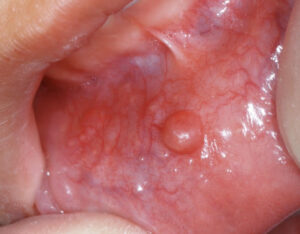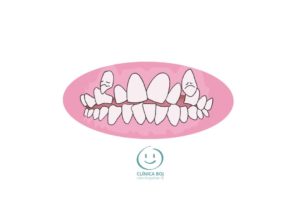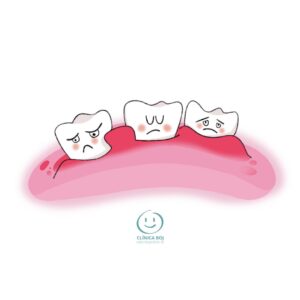Avulsion of baby teeth: what is it and how to act?
An avulsion of baby teeth consists of the complete loss of one or more primary tooth, generally caused by trauma to the oral area.
When our children are faced with a fall or blow to the mouth, one of the greatest fears we have is to see that their teeth have fallen out or broken.
Many types of trauma of varying intensity and severity can occur. On this occasion, we will talk about the complete loss of one or more baby teeth, which can affect the growth of the supporting maxillary bones and the permanent teeth.
What is dental avulsion of milk tooth?
When we observe that the tooth has completely come out, with crown and tooth root, we are facing an avulsion. Therefore, the avulsed teeth will be completely out of the tooth socket. In the case of dental avulsion, clinically we will see an empty hole or a hole filled by a clot inside the alveolar bone.
To avoid avulsions, it is advisable to wear a mouth guard in case of contact sports or activities. They should also be used in other sports where there may be accidental blows: hockey-ice, skates or grass; basketball; handball; etc. In addition, we must bear in mind that a future permanent tooth could suffer consequences from this type of impact.
What to do in case of avulsion of a primary tooth?
First of all, we should remain calm and look for the tooth that has fallen out. It is important to try to find the avulsed tooth.
It is advisable to put the fallen tooth in a saline solution and take it to the dental clinic together with the child as soon as possible. Undoubtedly, this will help the pediatric dentist to better determine how to approach the treatment of the severe trauma that has produced the avulsion. Seeing the tooth allows you to know the state of root development. If the tooth has not been found, we should rule out the possibility that the child has swallowed or aspirated it.
What should we do in the case of an avulsed baby tooth?
The recommended avulsion of primary teeth treatment is not to reinsert the temporary tooth that has fallen out. This will be different with avulsed permanent teeth, in which the tooth should be reimplanted for root resorption.
Should an avulsed primary tooth be reimplanted?
In the case of the milk tooth, reimplanting it implies the appearance of infections in the alveolus, since there is degeneration of the pulp or nerve. The risk for the definitive successor tooth would be too great, in addition to making the child undergo unnecessary and difficult procedures.
What are the initial recommendations for your child’s avulsion?
The initial instructions that we should carry out after a case of dental avulsion are:
- Soft diet for 10 days.
- Good oral hygiene with a soft brush to promote the healing process.
- Application of gels with antiseptics such as Chlorhexidine and a healing facilitator, such as hyaluronic acid.
- It is best not to use a pacifier or bottles during the first weeks.
How does an avulsion heal?
Depending on the age at which this type of trauma occurs, there are probabilities that complications may appear in the development of the definitive successor tooth.
This is especially true in cases of avulsion in children under 3 years of age. The first years are learning years for walking, running, jumping and playground games such as slides, swings, etc. Each of the above-mentioned novelties involves various accident risks.
What is the treatment for primary teeth that have been avulsed?
It is essential to follow up on all dental trauma. In cases of avulsed primary tooth treatment, it is recommended:
- visit the pediatric dentist as a dental emergency 30 minutes after the impact
- controls one week after the trauma,
- new control after one month, and
- then clinical and radiographic controls at 6 months and one year after primary tooth avulsion.
- Subsequently, annual check-ups should be carried out until the definitive tooth erupts. Sometimes completely displaced permanent teeth appear in the long term if the child is not properly controlled. Occasionally, root canal treatments are necessary.
Therefore, we can conclude that avulsion of primary teeth due to a trauma is an event that can occur especially in the first years of life. This circumstance should not be a situation that we should let pass.

In summary, the pediatric dentist knows the treatment for a baby tooth avulsion, the steps to follow, how to act and what signs should alert us. Also, of the possible consequences that such a strong blow can cause in the future permanent dentition.
Bibliography:
Guidelines for the Management of Traumatic Dental Injuries: 3. Injuries in the Primary Dentition, Endorsed by the American Academy of Paediatric Dentistry 2013.






